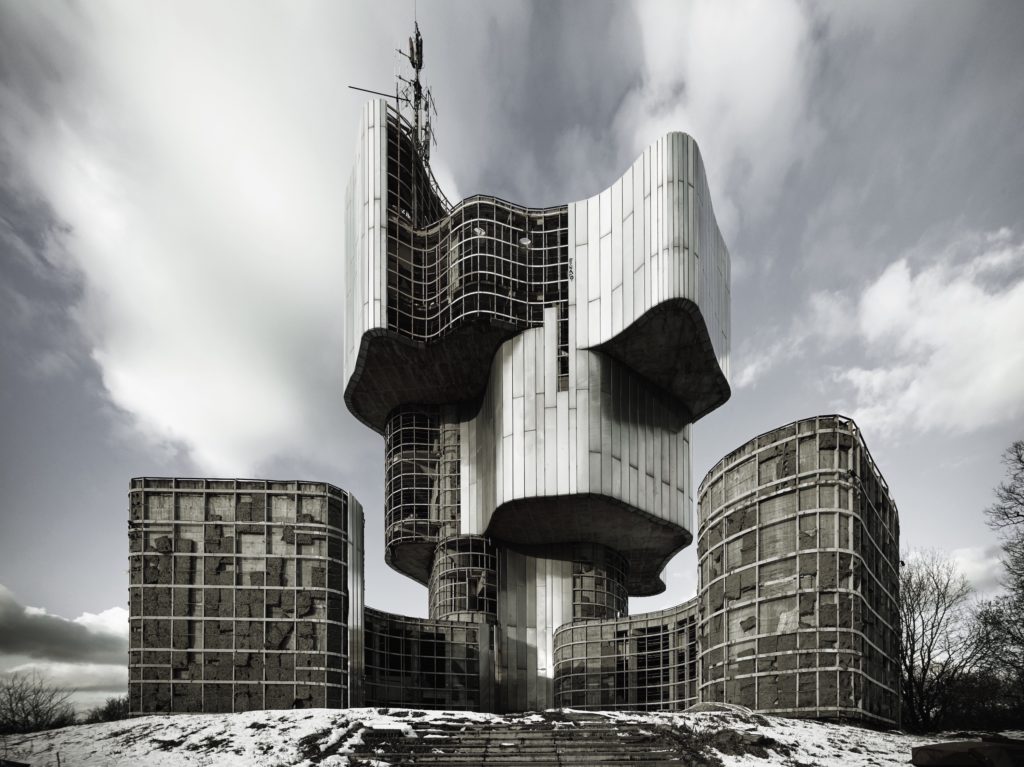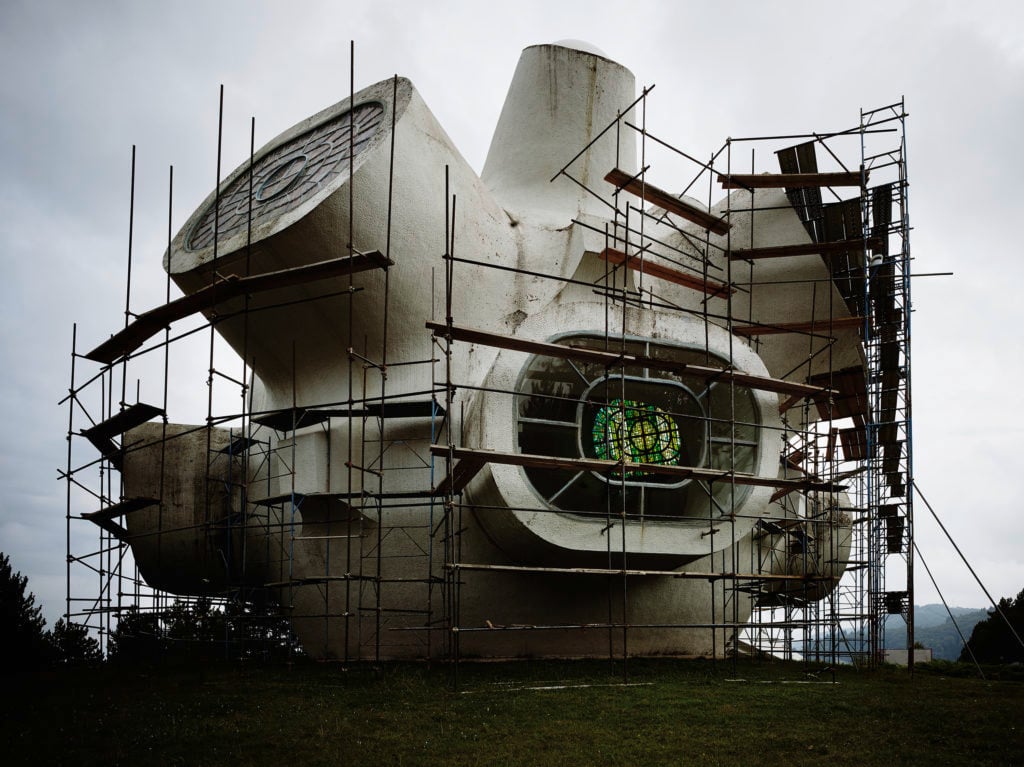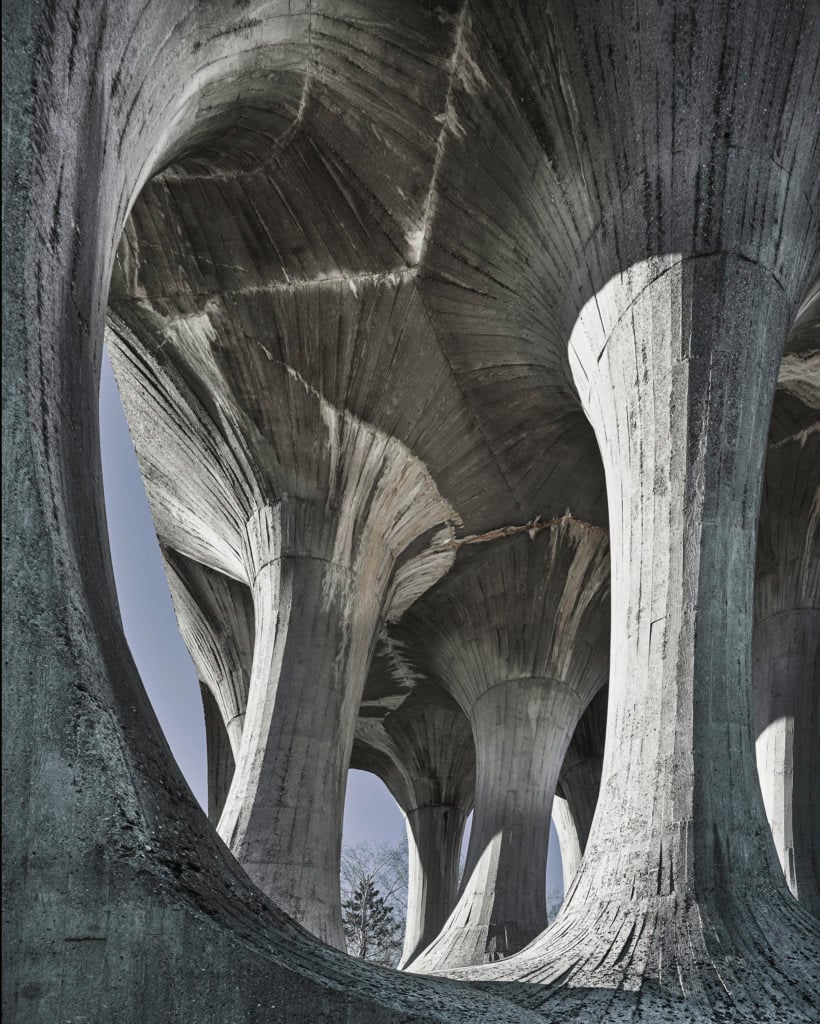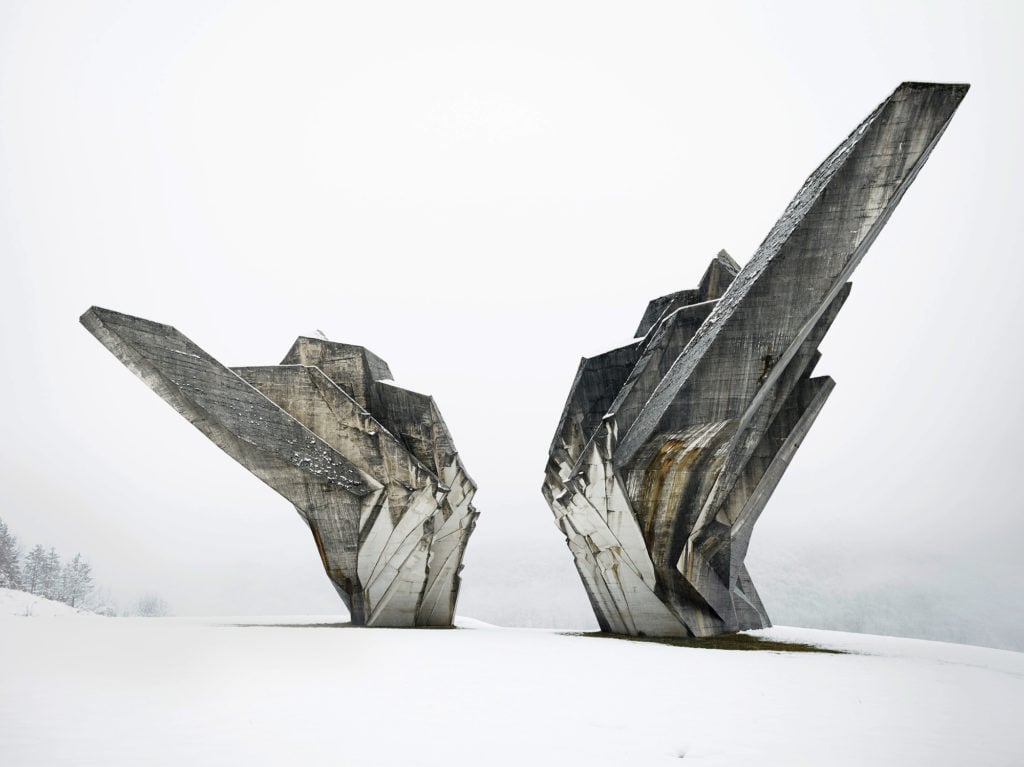On View
MoMA’s Astonishing New Architectural Show Reveals Yugoslavia’s Ruins to Be More Than Just Monuments of an Alien Civilization
At MoMA ,"Toward a Concrete Utopia" looks at the fascinating structures known as "spomeniks."

At MoMA ,"Toward a Concrete Utopia" looks at the fascinating structures known as "spomeniks."

Sarah Cascone

Concrete, never the most glamorous of construction materials, takes center stage at New York’s Museum of Modern Art, and the results are riveting. With its exhibition “Toward a Concrete Utopia,” the institution has turned its attentions to the architecture of the former Yugoslavia, a socialist federation of seven Slavic nation states that ceased to exist after the deadly Yugoslav Wars broke out in 1991.
The socialist experiment failed, but what remains are the ambitious designs of its architects and urban planners, radical brutalist structures that include the arresting “spomeniks,” large-scale concrete monuments that dot the countryside of the Balkans.
In presenting Yugoslavian modernist architecture to an international audience for the first time, MoMA goes a ways toward demystifying these incredible structures, which have in recent years become the subject of widely shared viral stories thanks in large part to the work of photographer Jan Kempenaers. Spomeniks have been lauded for their futuristic, otherworldly aesthetic. To some, they seem as if they were left behind by an alien civilization.
Martino Stierli, MoMA’s chief curator of architecture and design, is quick to acknowledge the exotic appeal of spomeniks, but also cautioned against it. “I was also susceptible to that fascination on social media, which prompted my curiosity,” he admitted at a talk following the exhibition press preview with museum director Glenn Lowry and co-curator Vladimir Kulić, an associate professor in the school of architecture at Florida Atlantic University.

Jordan and Iskra Grabul, Monument to the Ilinden Uprising (1970–73), Kruševo, Macedonia. Photo by Valentin Jeck, commissioned by the Museum of Modern Art, New York (2016).
The exhibition wall text describes spomeniks as “an unusually fruitful ground for experimentation,” noting that “architects and artists often collaborated on projects that blurred the lines between disciplines.”
“These monuments explore a really interesting formal register between figuration and abstraction,” Stierli added. “They are out of scale for a more conventional understanding of what a monument could be, and that has led to the perception of these objects as otherworldly strange things that landed on planet Earth—which is of course part of the Orientalist narrative that the Balkans has historically been subjected to. It’s still seen as a part of the world that’s a backwater.”

Živa Baraga and Janez Lenassi, Monument to the Fighters Fallen in the People’s Liberation Struggle (1965), Ilirska Bistrica, Slovenia. Photo by Valentin Jeck, commissioned by the Museum of Modern Art, New York (2016).
In addition to painting a broader picture of the ambition and achievements of postwar Yugoslavian architecture, the exhibition curators also specifically hoped to improve Western understanding of spomeniks, not as mysterious, surreal cultural relics, but as functional structures with a clear purpose. (MoMA commissioned Valentin Jeck to take new photographs of much of the architecture featured in the show.)
“These monuments were really important in the construction of an overarching common history for Yugoslavia in that they commemorated the anti-fascist struggle of the partisans in World War II, and the many many thousands of victims of fascism an concentration camps,” explained Stierli. “That traumatic experience became the foundational myth of post-war socialist Yugoslavia.”
As photographs of the spomeniks have circulated the internet, they have been stripped of this crucial context, with many articles claiming the break-up of Yugoslavia eradicated the monuments’ original meaning, thereby imbuing them with the air of romantic desolation. (Many, but not all, spomeniks have fallen into neglect over the years.)

Miodrag Živković and Đorđe Zloković, Monument to the Battle of the Sutjeska (1965-71), Tjentište, Bosnia and Herzegovina. Photo by Valentin Jeck, commissioned by the Museum of Modern Art, New York (2016).
Kulić criticized such media representations of spomeniks as “just these pretty objects in the landscape,” haunted by a forgotten history. “Their commemorative function did not cease to be significant with the collapse of socialist Yugoslavia,” he stressed.
“Wiping out that history is something quite problematic,” Kulić added. “We were very careful in trying to actually bring back the information of what these monuments were devoted to—especially [given] today’s political moment and the fact that we’re dealing with a huge body of work that commemorated antifascist struggle.”
Stierli agreed. “In that sense these monuments have a very very specific and important social function. They produced highly interesting hybrid forms. They weren’t just sculptural objects—many of them transcend the scale of sculptural objects and become architecture… they are really sculpture in the expanded field.”
“Toward a Concrete Utopia: Architecture in Yugoslavia, 1948–1980” is on view at the Museum of Modern Art, 53 West 53rd Street, July 15, 2018–January 13, 2019.